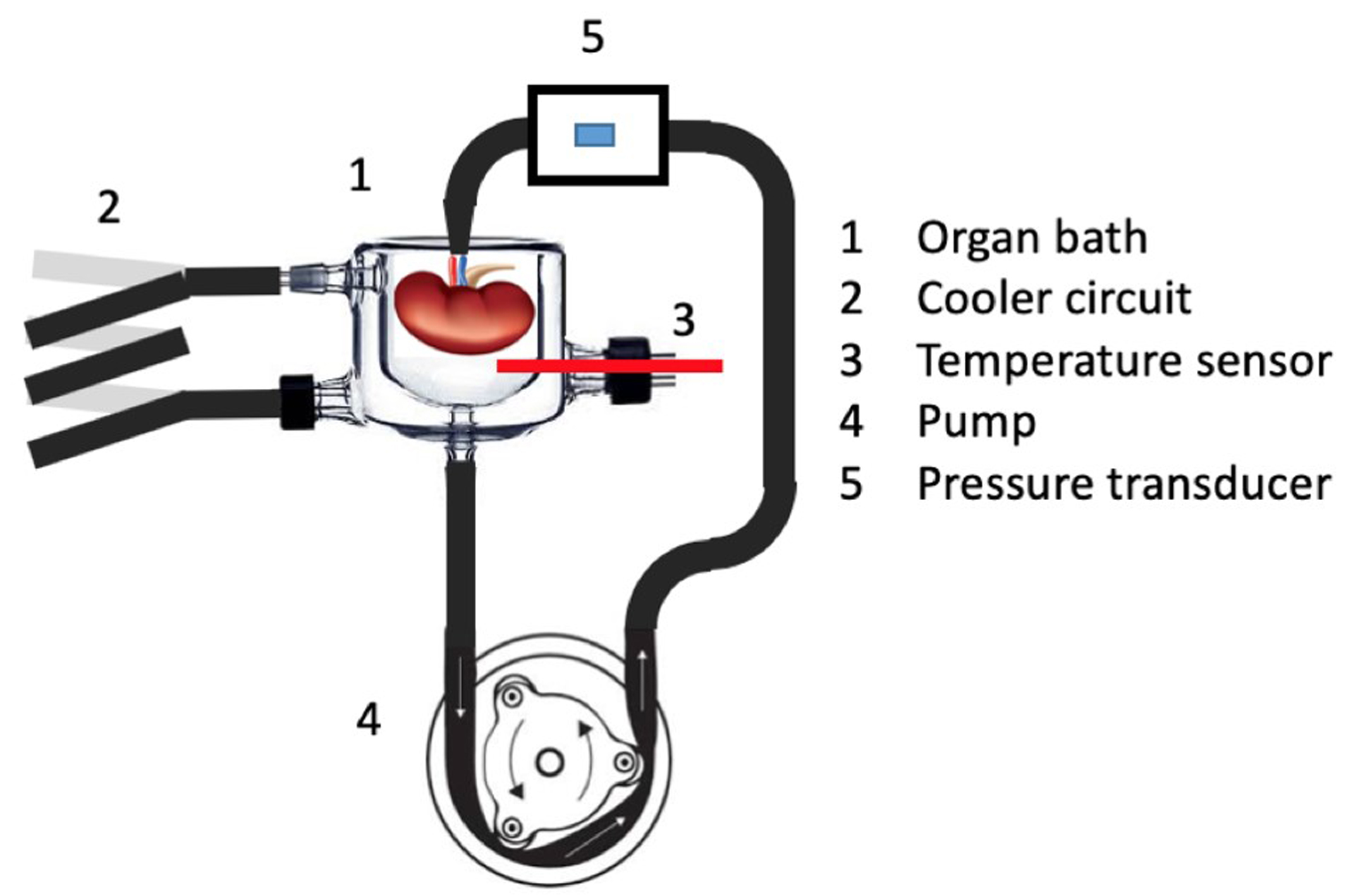A Technique for Ex-Vivo Perfusion of Donor Kidneys for Transplantation in the Mouse
1Pulmonary Division, University of Colorado, Aurora, CO, 2Renal Division, University of Colorado, Aurora, CO
Meeting: 2020 American Transplant Congress
Abstract number: A-365
Keywords: Kidney transplantation, Machine preservation, Mice, Perfusion solutions
Session Information
Session Name: Poster Session A: Ischemia Reperfusion & Organ Rehabilitation
Session Type: Poster Session
Date: Saturday, May 30, 2020
Session Time: 3:15pm-4:00pm
 Presentation Time: 3:30pm-4:00pm
Presentation Time: 3:30pm-4:00pm
Location: Virtual
*Purpose: Ex-vivo perfusion of donor kidneys is widely employed in the US and significantly reduces DGF. Development of a pre-clinical perfusion technique may provide an opportunity to prevent Ischemia Reperfusion Injury, and possibly acute rejection. Here we describe a technique that allows for both the ex-vivo perfusion and the transplantation of kidneys in the mouse.
*Methods: Left kidneys were recovered according to previously described techniques except that the heel and toe cuff was not immediately formed, and a 24g angiocatheter was placed in the infrarenal abdominal aorta. The aorta, IVC and renal vessels were isolated by careful dissection. Lumbar vessels were ligated and divided. 6-0 silk ligatures were placed on the aorta superior to the right renal artery, and between both renal arteries. A 10-0 nylon was placed around the infrarenal aorta in preparation for puncture with a 30G needle approximately 3-5mm from the renal artery. The hole was then extended to facilitate the introduction of the angiocatheter. The aorta was secured to the catheter with a circumferential 10-0 nylon suture. The suprarenal ligature was tied and both kidneys were then flushed with the perfusate. Then the ligature between the renal arteries was tied and the right kidney was placed in static storage and the left kidney was suspended from the 24g angiocatheter in an organ bath. Ex-vivo perfusion The organ bath and perfusate were maintained at 4oC and the perfusate was pumped at a constant rate. At the conclusion of 3hrs of perfusion the kidneys were prepared for transplantation by the formation of the aortic heel and toe cuff, after which transplantation was performed as previously described (Plenter 2015).
*Results: Using this technique, we have been able to successfully recover kidneys from donor mice, perfuse those kidneys on an ex-vivo perfusion system, and subsequently implant those same kidneys into recipient mice.
*Conclusions: We have developed a novel reproducible model for studying ex-vivo renal perfusion which will allow for cost effective studies in allograft manipulation prior to kidney transplantation. We have established that, with very careful preparation of the donor, this can be achieved in a reliable fashion.
To cite this abstract in AMA style:
Plenter R, Jain S, Pomposelli JJ, Nydam T, Jani A. A Technique for Ex-Vivo Perfusion of Donor Kidneys for Transplantation in the Mouse [abstract]. Am J Transplant. 2020; 20 (suppl 3). https://atcmeetingabstracts.com/abstract/a-technique-for-ex-vivo-perfusion-of-donor-kidneys-for-transplantation-in-the-mouse/. Accessed December 12, 2025.« Back to 2020 American Transplant Congress

